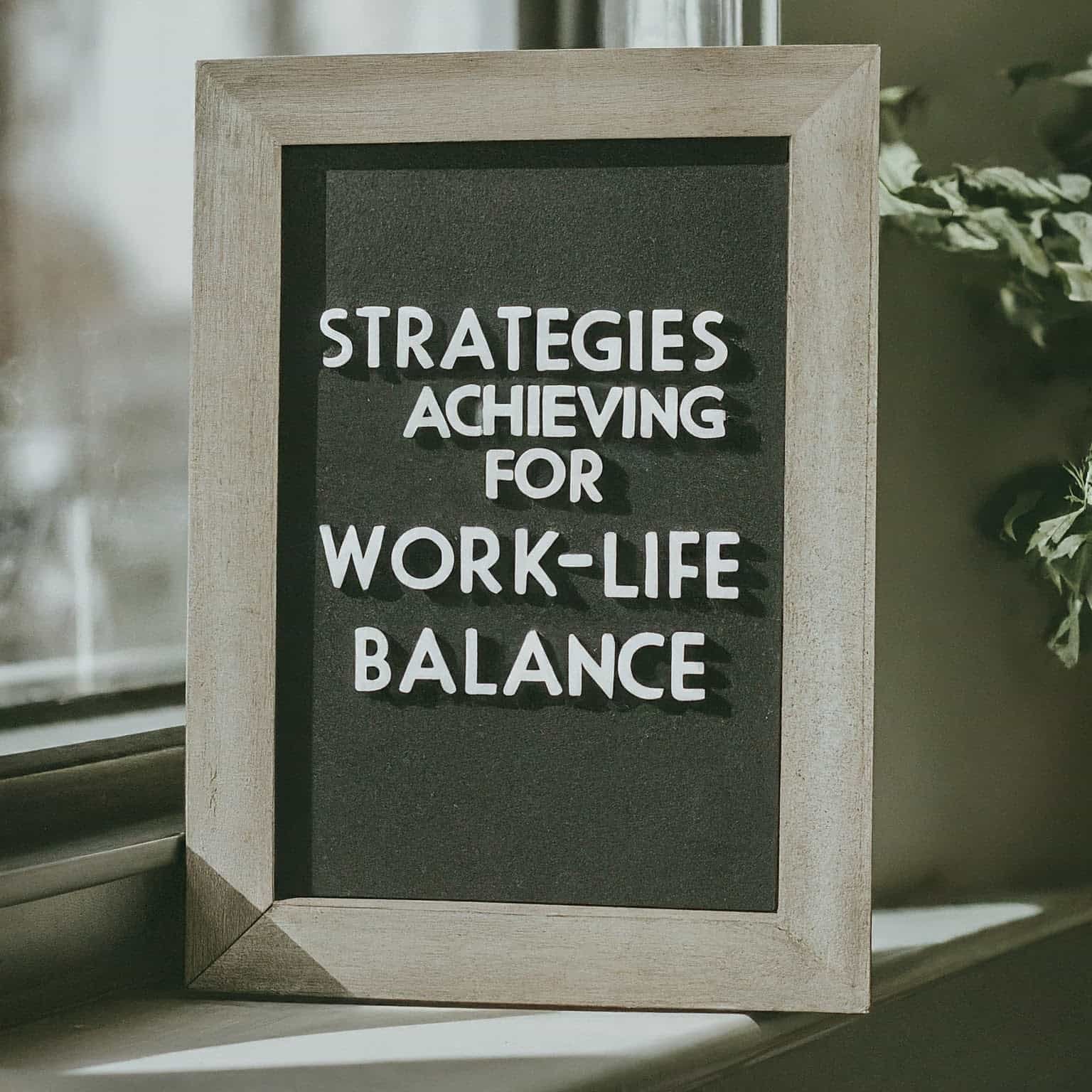Work-life balance is essential, especially for professionals managing busy careers and personal duties. It’s about finding harmony between work and personal life. Discover its significance and practical strategies for achieving balance in this article.”
Achieving work-life balance is vital for professionals for several reasons. Firstly, it helps prevent burnout, which is a state of physical, emotional, and mental exhaustion caused by prolonged stress and overwork. When we neglect our personal lives in favor of work, it can lead to decreased productivity, increased absenteeism, and even health problems.
Moreover, maintaining a healthy work-life balance improves overall well-being. It allows individuals to nurture relationships, pursue hobbies, and engage in activities that bring joy and fulfillment outside of work. This, in turn, enhances mental health, boosts happiness levels, and contributes to a greater sense of satisfaction with life.
Furthermore, a good work-life balance fosters increased productivity and creativity in the workplace. When employees feel supported in managing their responsibilities alongside work commitments, they are more motivated, focused, and innovative.
Key Takeaways
- Understanding Work-Life Balance: Work-life balance is crucial for preventing burnout, enhancing well-being, and fostering productivity and creativity in the workplace.
- Setting Boundaries: Establish clear boundaries between work and personal life by defining working hours, learning to say no, and communicating boundaries openly with colleagues and managers.
- Enforcing Boundaries: Enforcing boundaries is essential for mental health and productivity, as it allows for proper self-care, relaxation, and focus on high-priority tasks.
- Time Management Techniques: Prioritize tasks, focus on high-value activities, allocate time effectively through time blocking, avoid multitasking, set realistic goals, break tasks into manageable chunks, and avoid overcommitment to maintain balance and efficiency.
- Effective Communication: Utilize communication platforms for efficient collaboration, while also setting boundaries with technology to prevent it from encroaching on personal time.
- Maintaining Work-Life Balance While Working Remotely: Establish routines, set boundaries, create a dedicated workspace, maintain regular working hours, and prioritize self-care to prevent remote work from impacting personal life negatively.
Overview of the Strategies to Be Discussed
In the following sections, we’ll explore practical strategies that professionals can implement to achieve better work-life balance:
| Strategies | Description |
| Setting Boundaries | Establish clear boundaries between work and personal life. Define specific work hours, avoid bringing work home, and unplug from work emails and calls during personal time. |
| Prioritizing Tasks | Learn to prioritize tasks based on importance and deadlines. Focus on high-priority tasks first to prevent work from spilling over into personal time. |
| Time Management | Implement techniques like the Pomodoro Technique or time blocking to maximize productivity during work hours, allowing for more leisure time outside of work. |
| Self-Care Practices | Prioritize self-care activities such as exercise, meditation, and hobbies. Taking care of oneself physically, mentally, and emotionally is crucial for overall well-being. |
Setting Boundaries: A Guide to Balancing Work and Personal Life
Setting boundaries is like drawing lines on a map – it helps us navigate the terrain of our lives with clarity and purpose. When it comes to balancing work and personal life, understanding and establishing boundaries is key. In this article, we’ll explore what personal and professional boundaries are, offer practical tips for setting them, and highlight the importance of enforcing boundaries for mental health and productivity.
Understanding Personal and Professional Boundaries
Personal boundaries refer to the limits we set to protect our physical, emotional, and mental well-being. They define what is acceptable and unacceptable in our interactions with others, including family, friends, and colleagues. Professional boundaries, on the other hand, pertain to the limits we establish in the workplace to maintain professionalism, manage workloads, and uphold our personal values.
Tips for Setting Boundaries
- Define Working Hours: Establishing clear working hours helps delineate when you are available for work-related tasks and when you are off the clock. This means setting a start and end time for your workday and sticking to it as much as possible.
- Learn to Say No: It’s important to recognize your limits and learn to say no when necessary. Whether it’s taking on additional projects or working overtime, saying no to tasks that exceed your capacity is essential for preserving your time and energy.
- Establish Clear Communication with Colleagues and Managers: Communicate your boundaries openly and honestly with your colleagues and managers. Let them know your availability, preferred methods of communication, and any limitations you may have.
Importance of Enforcing Boundaries for Mental Health and Productivity
Enforcing boundaries is crucial for maintaining both mental health and productivity in the workplace. When we fail to set and enforce boundaries, we risk becoming overwhelmed, stressed and ultimately burnt out. By establishing clear limits on our time, energy, and resources, we create space for self-care, relaxation, and rejuvenation.
Moreover, enforcing boundaries promotes productivity by allowing us to focus on high-priority tasks without distractions. When we have defined working hours and clear expectations, we can work more efficiently and effectively, leading to better outcomes and results.
Time Management Techniques: A Roadmap to Efficiency and Balance
Time is a precious resource, and managing it effectively is essential for achieving our goals and maintaining a healthy balance between work, personal activities, and relaxation. In this article, we’ll explore various time management techniques that can help us prioritize tasks, stay focused, and avoid burnout.
| Strategies | Description |
| Prioritization of Tasks | Identify and rank tasks based on urgency and importance using methods like the Eisenhower Matrix or ABC prioritization. |
| Identifying and Focusing | Recognize high-value tasks that contribute significantly to goals and objectives. Focus on these tasks to maximize productivity and impact. |
| Time Blocking and Scheduling | Allocate specific time slots for different activities to create a structured schedule. Stick to the schedule to ensure all aspects of life receive attention and tasks are completed. |
| Avoiding Multitasking | Focus on one task at a time to maintain productivity and reduce stress. Avoid the temptation to multitask, as it often leads to lower-quality work and decreased efficiency. |
| Setting Realistic Goals and | Break larger goals into smaller, manageable tasks with set deadlines. This approach helps prevent procrastination and keeps motivation high throughout the completion process. |
| Breaking Tasks into Manageable | Divide large tasks into smaller, more manageable chunks to make them feel less overwhelming. Tackle each chunk one at a time to steadily progress toward completion. |
| Avoiding Overcommitment | Recognize limits and avoid overcommitting to prevent burnout and exhaustion. Prioritize well-being by saying no to additional responsibilities when necessary. |
Communication Platforms for Efficient Collaboration
Effective communication is essential for collaboration, especially in remote or flexible work environments. Communication platforms like Slack, Microsoft Teams, or Zoom facilitate seamless communication and collaboration, allowing teams to stay connected and productive regardless of location.
Setting Boundaries with Technology
While technology can enhance productivity, it’s essential to set boundaries to prevent it from encroaching on our time. This might include limiting non-essential notifications and distractions, designating tech-free zones or times for personal activities, and establishing clear guidelines for when and how we engage with technology.
Maintaining Work-Life Balance While Working Remotely
Working remotely offers many advantages, but it can also blur the lines between work and personal life. To maintain balance, it’s essential to establish routines, set boundaries, and prioritize self-care. This might include creating a dedicated workspace, setting regular working hours, and taking breaks throughout the day to recharge.
FAQS
- What is the importance of work-life balance?
- Achieving work-life balance is vital for well-being, preventing burnout, boosting mental health, and enhancing productivity and satisfaction. Balancing professional duties and personal life fosters fulfillment, enabling individuals to lead meaningful lives with greater happiness and contentment.
How can I improve my time management skills?
- Improving time management means prioritizing tasks, setting achievable goals and deadlines, using productivity tools, and avoiding multitasking. Techniques like time blocking, breaking tasks into smaller parts, and declining excessive commitments help maximize productivity and achieve a healthier work-life balance.
Conclusion
In conclusion, as we navigate the complexities of modern life, finding a balance between our professional obligations and personal well-being is essential for our happiness and success. By employing various strategies and leveraging technology wisely, we can create a harmonious blend of work and personal life. From setting boundaries and prioritizing tasks to utilizing productivity tools and communication platforms, each step we take brings us closer to achieving the balance we seek. Let’s embrace these approaches with intentionality and mindfulness, remembering that balance is not a destination but a continuous journey. As we move forward, let’s prioritize our health, happiness, and fulfillment, making conscious choices to cultivate a life that is both productive and meaningful.



